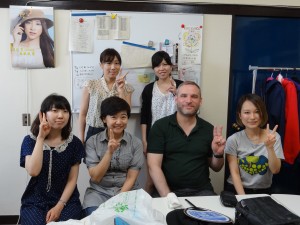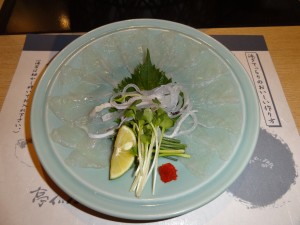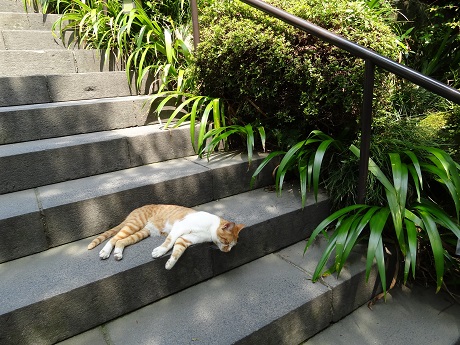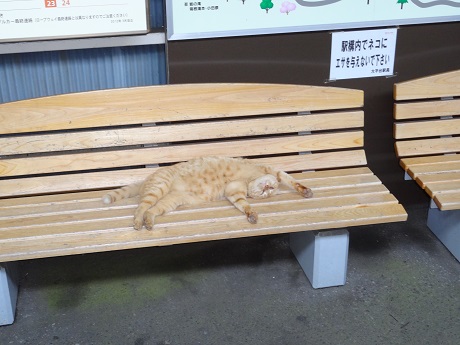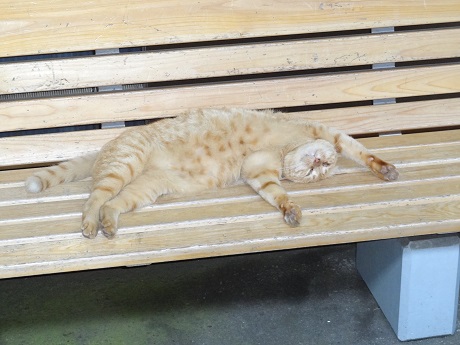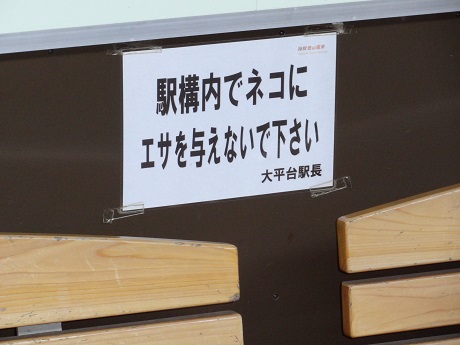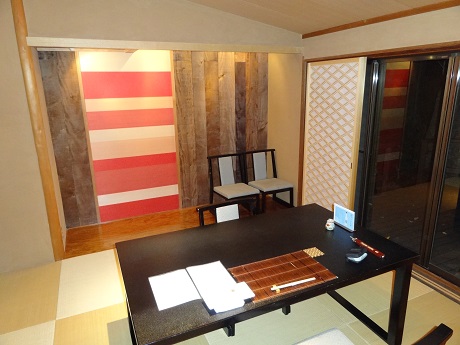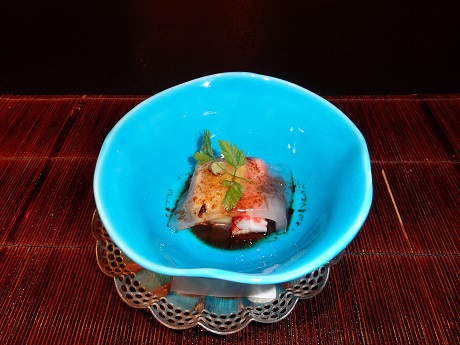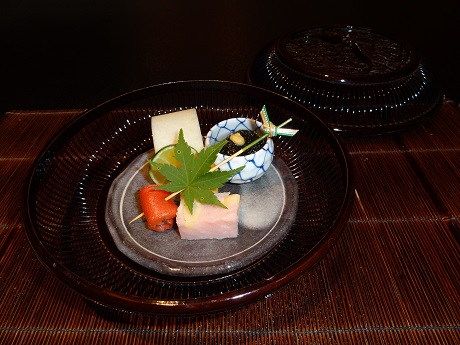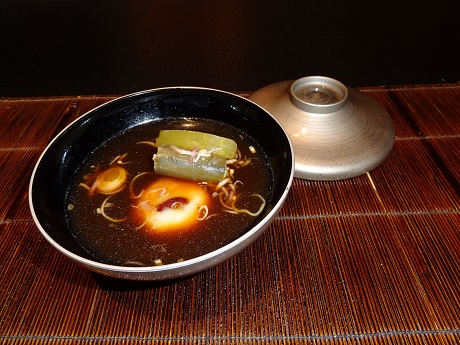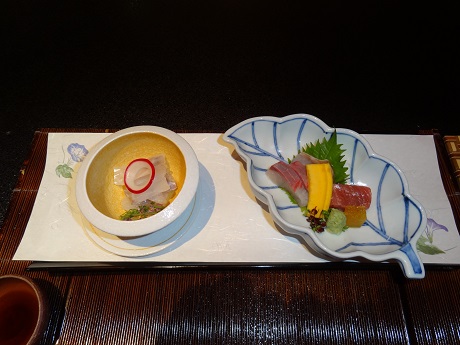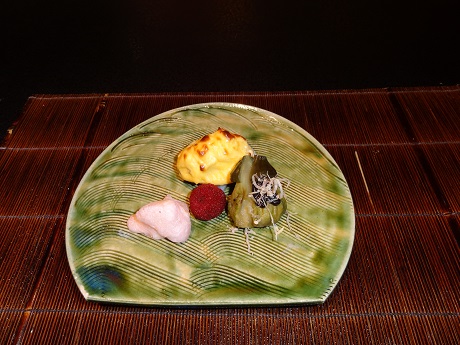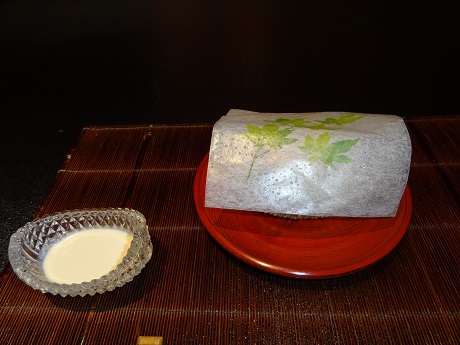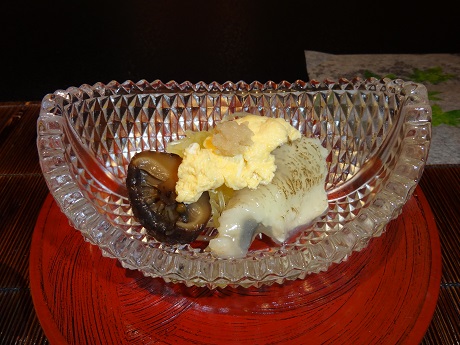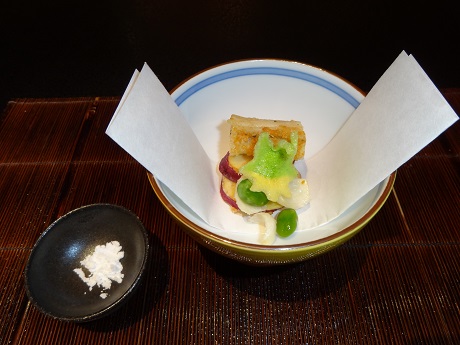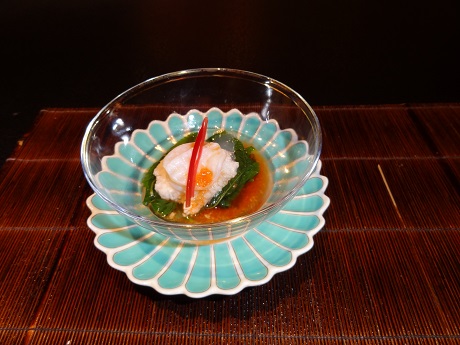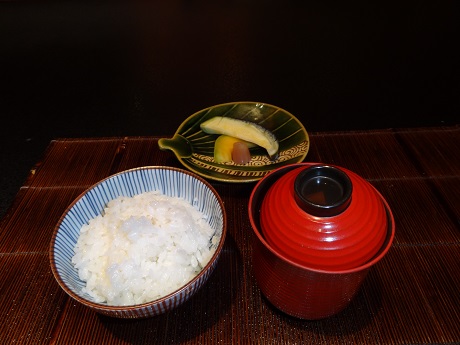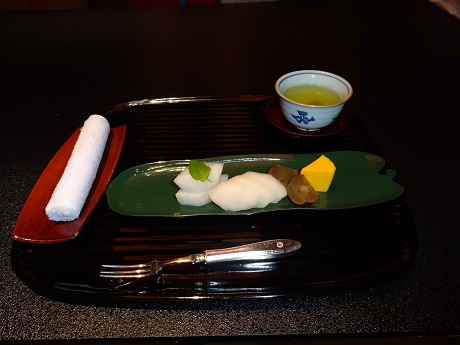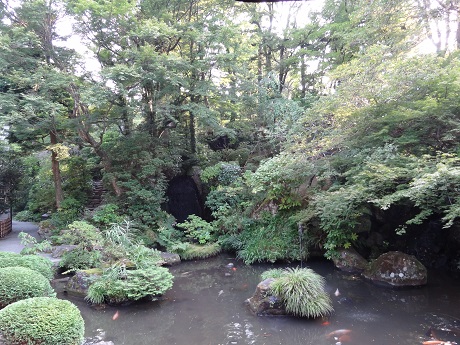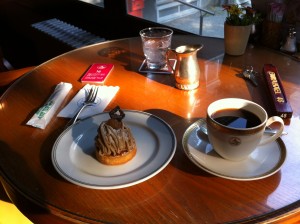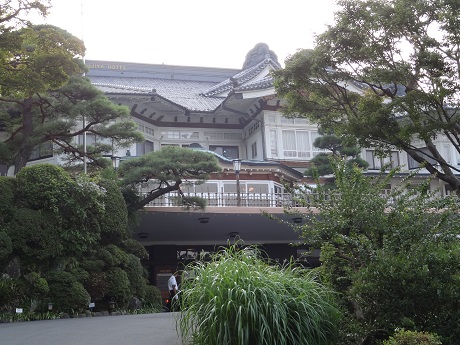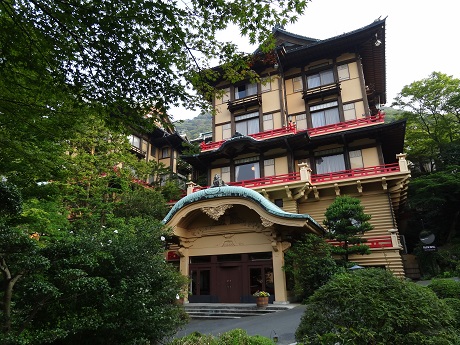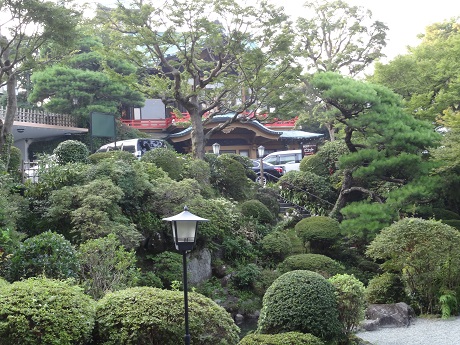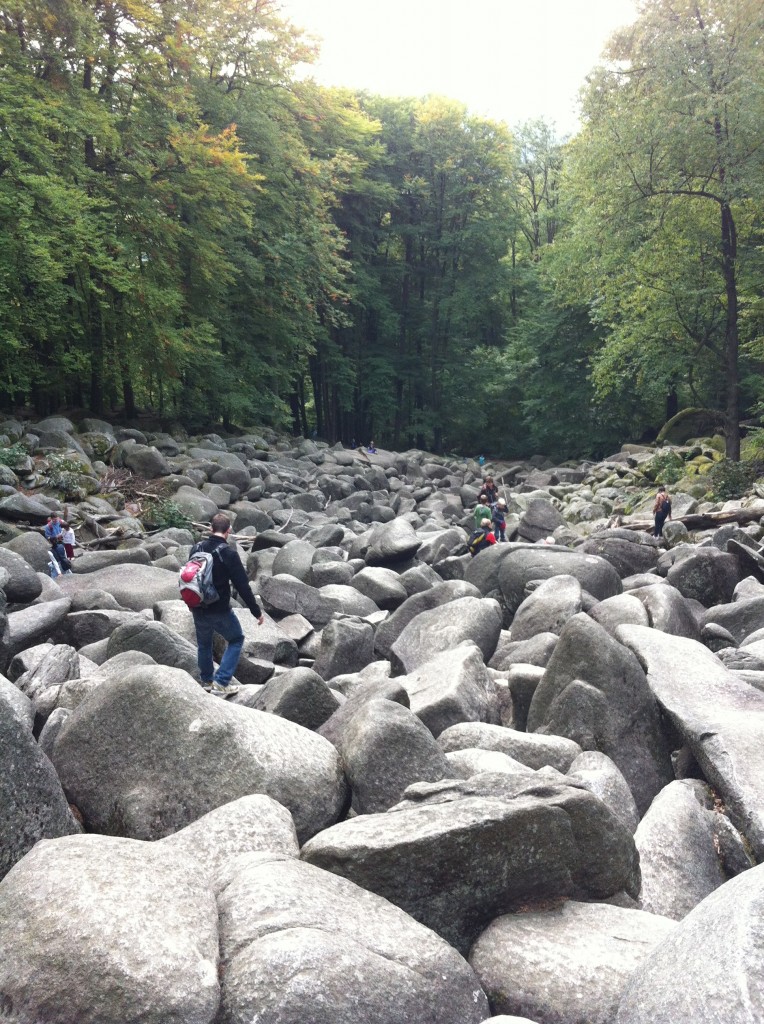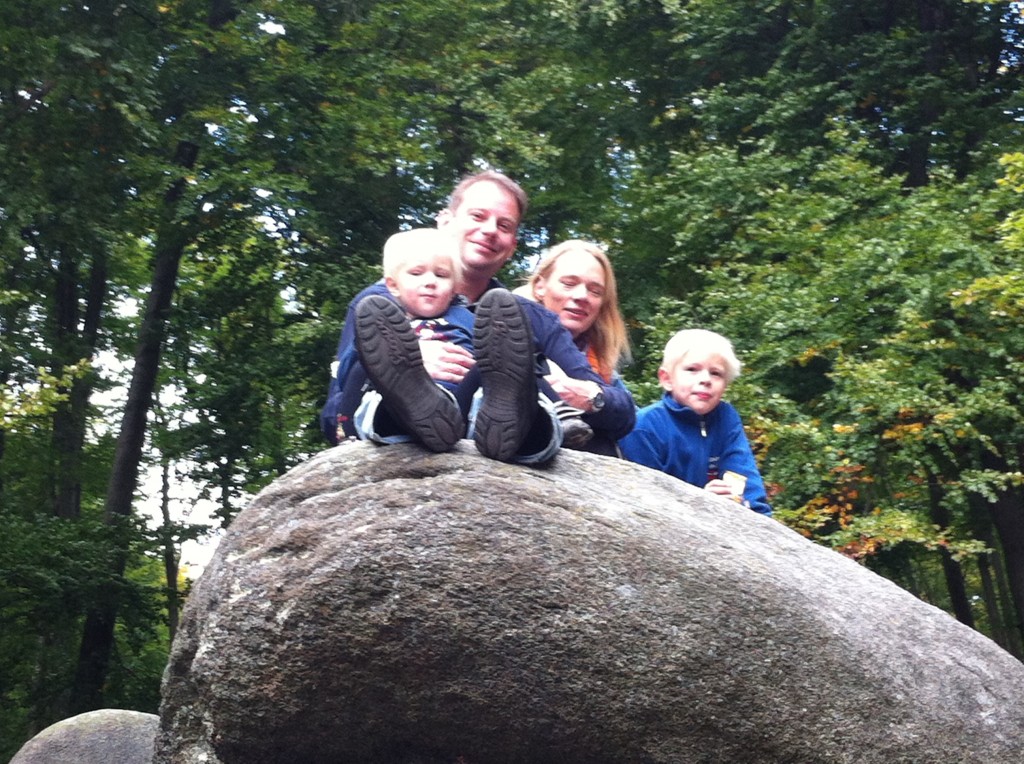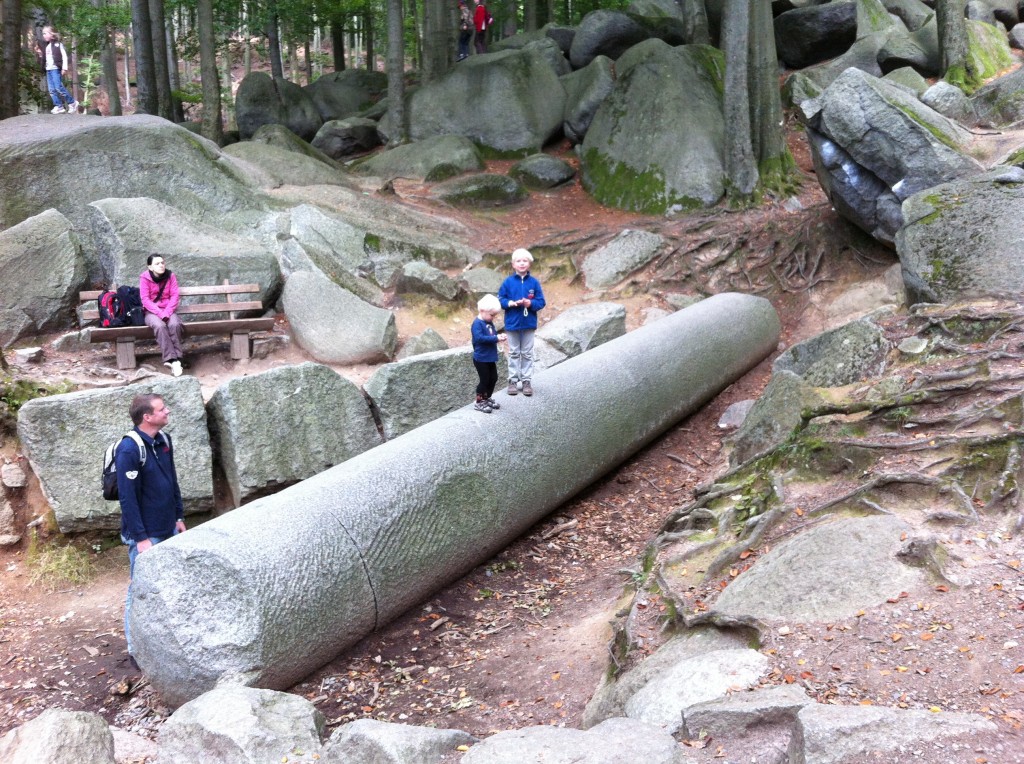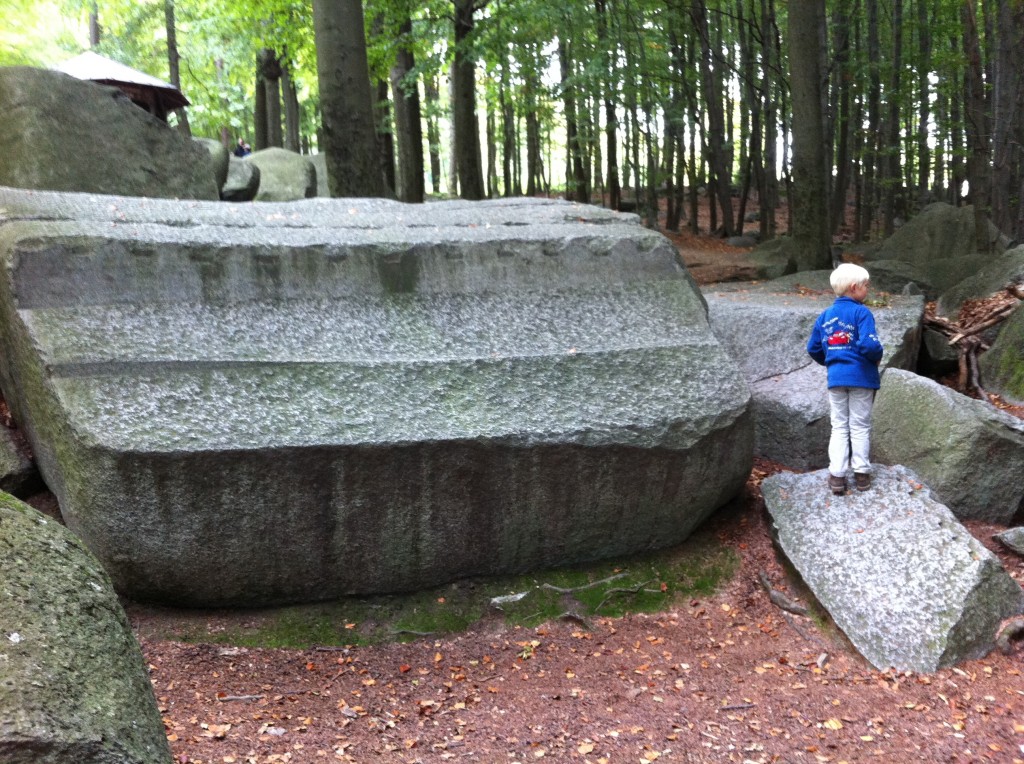‘Leisure’ Category
-
Japan – the final post
0August 21, 2013 by IPAlchemist
This is my sixth post on my trip to Japan, so I think that the time has come to write a final post, and then declare the subject closed for this time.
My previous posts give a rather distorted view of my trip, focusing as they do on only three days out of the week that I was there. Moreover, I realise that they in fact miss out what was the main reason for my trip in the first place (which was in fact my only trip to Japan ever where the primary purpose has not been work).
The motivation for going to Japan was the 60th birthday of my former professor when I was a post doc at the Tokyo Institute of Technology, Prof Koichi Mikami. The 60th birthday is a big deal in Japan, called Kanreki, because it represents five cycles of the 12-year Chinese astrological year cycle. So when I heard that the event was taking place, I really wanted to attend, both to present Prof Mikami with all my best wishes, and also to see some of my former colleagues, most of whom I had not seen since I left Japan in 1998.
I have never been to such a party before, and it was a fascinating experience. In format it follows the usual Japanese course of speeches, toasts, and food. I was asked (without a great deal of notice) to make a short speech, which I tried to do in Japanese – I hope that I did not make too bad a job of it. The venue was the Grand Prince Hotel Takanawa, near Shinagawa station (Shinagawa now becoming a rather popular and lively entertainment destination). It was great to see Prof Mikami again, together with his lovely wife and and daughter, and it was also wonderful to both catch up with some old colleagues and meet some new former students. I was very interested to find out what everyone is doing now, and was most happy that another former lab member is also a patent attorney (in Japan). I am not the only one!
I caught up with a few other people during my visit. I went to visit my former colleague Prof Yajima, who is now a professor at Ochanomizu Women’s University (yes, the institution of the Women’s University is alive and well in Japan). Together with some of her research students, we had a lovely tour around Tokyo, and went to see a really rather wonderful exhibition of goldfish. No, really. I never knew that the Japanese had such a liking for goldfish but it turns out that they have featured in Japanese art for many years. We saw all different kinds presented in an astonishing assortment of aquaria.
With my former research student Dr Ohmura, I went to the relatively new Edo Tokyo Museum, which is a fantastic museum of the history of Tokyo (located in Ryogoku, next to the Sumo stadium) from the Edo period up until the late 20th century. We spent a good two hours there and really felt that we could have spent a lot more: there is so much fascinating material, and most of it is accompanied by excellent and detailed explanations in English (as well as the Japanese). It really greatly surpassed my expectations. After a brief detour to Asakusa to buy a replacement yukata, we ended up having a shabu-shabu dinner at the excellent Imahan Bekkan (annex) restaurant, where we were seated in wonderful cherry-themed private room.
I also caught up with an old Oxford friend who now lives in Tokyo, and together we went for an excellent fugu dinner. Continuing the stream of food photos, here is the sashimi course.
Finally, I had always regretted that in my two years living in Japan, and in all my visits since, I have never managed to get to the English-language Anglican church in Tokyo, St Alban’s. During my normal business trips, I’m practically never in Tokyo on a Sunday morning, so this seemed like a great opportunity. So off I toddled and it was really wonderful. The clergy and congregation were so friendly and welcoming, and it seemed like half of the attendees were in fact visitors like me. Most astonishingly, I ran into somebody that I follow on Twitter, and that I had half hoped to look up when I was in Tokyo, but did not expect to find there of all places. That was a wonderful happenstance that really made my day.
I should end with a comment about that most English and Japanese topic of conversation, the weather. I must have edited my memory bank, because from the two years that I lived in Japan I have no recollection of the weather ever being quite as unbearably hot and sticky as it was on this trip. Moreover, it is now fashionable in Japan to save electricity by setting the air conditioning to between 26 and 28 degrees centigrade. As I pointed out to my friends, this to me is an external air temperature requiring air conditioning, not a target indoor temperature. As a result, the only place in Tokyo where the ambient temperature was to my liking was my hotel room. Nevertheless, as I was sweltering in rooms with temperatures in the high 20s, not a few Japanese ladies in those same rooms were seeking out their cardigans to ward off the perceived chill. Temperature perception is clearly a relative matter!
Category Leisure, Travel | Tags: fugu, goldfish, Grand Prince Hotel Takanawa, kanreki, Ochanomizu Women's University, Tokyo Institute of Technology, Tokyo/Edo Museum, weather
-
The Kabuki
1August 20, 2013 by IPAlchemist
The highlight of my visit to Japan was a trip to the newly rebuilt Kabuki-za in Ginza, where I was kindly taken by my former Japanese teacher Emiko.
I have no pictures, so I am going to have to use words to paint the scene. Bear with me, dear readers.
The Kabuki-za puts on three performances a day, and each performance consists of two plays separated by an interval. Emiko had recommended that we go and see the first performance of the day, which featured two very different pieces – Nozaki-mura (Nozaki Village) and Shunkyo Kagami Jishi (Young Yayoi and the Spirit of the Lion). The style of the two plays is completely different, making the experience a wonderful introduction to Kabuki. I have never before seen Kabuki in Japan, although I did go twice to see Ebizo Ichikawa XI perform at Sadler’s Wells a few years ago (featuring a performance of Fujimusume – “Wisteria maiden”, and another play Kasane). But neither piece at the Kabuki-za was at all like anything that I saw then – there being many strands of the Kabuki tradition and the experience of each one being (to me at least) quite distinct.
Emiko had been keen that I see the famous Kabuki actor Kankuro Nakamura perform the lion dance in the second piece. His brother Shichinosuke would take over the part from the day after we went. But the same Shichinosuke performed one of the main onagata (man playing female) roles in the first piece.
Do follow the above links for synopses of the two plays – I won’t repeat here. Suffice to say for present purposes that Nozaki-mura originated as a bunraku (puppet theatre) performance and therefore is accompanied by the same shamisen and chanting performers as bunraku is. It features a love triangle with a (to my mind rather pathetic and selfish) man (called Hisamatsu) being engaged to a girl (Omitsu) to whose family he is indebted, while being in love with his boss’s daughter (Osome, who turns out to be pregnant with his child).
I was utterly transfixed by both Osome and Omitsu for completely different reasons. Osome (played by Shichinosuke) was absolutely stunning – when she appeared on the hanamichi wearing a gorgeous purple kimono, the whole audience literally gasped. Omitsu is portrayed as plainer, as the plot requires, but I was captivated by her deft and agile movements, for example as she practised applying makeup, and as she chopped a daikon. She was so expressive as well, in particular as she showed her displeasure at the unwelcome arrival of her love rival.
I was also very struck by the fact that the most bawdy comic part of the piece, namely the banter between two palanquin bearers, occurs precisely at the most emotion-laden scene, and not separated from it. I think Shakespearean tragedy employs similar juxtaposition of the tragic and the comic for heightened effect of the emotional intensity.
There is a lot less going on in the second piece in terms of plot, and really the play seems to be about the presentation of some set piece dances. The musical style is completely different and is called “nagauta“, featuring a large musical ensemble of shamisens, drums, flutes, and chanters, all in stiff formal dress. A dancing maiden becomes possessed by the spirit of a lion god, and so reappears in a fantastical outfit with a mane-like hair which at the back is almost full-body length. The movements of the lion contrast sharply with two butterfly dancers (played by two young men) who generally flap about while the lion is doing his thing. I don’t think that you need to be any particular kabuki expert to really enjoy the beauty of this kind of performance.
Kabuki has a reputation of being inaccessible, but, particularly with the excellent English in-ear commentary, I did not find it at all hard to follow what was going on, and to feel an appreciation of the extraordinary talents and abilities of the performers, as well as a very human response to the characters in the first, more narrative, piece. I am sure that there will have been layers of subtlety that I missed, but I would really encourage anyone to go and experience this wonderful art form for themselves if they get a chance.
Emiko, who is an expert on Japanese Noh drama, informed me that the lion dance piece is also performed in the Noh tradition, but that “in Noh, we do it with masks”. I love “we do it with masks” as the distilled quintessence of the distinction between the earlier, more formal, Noh theatre, and the later Kabuki tradition. (For my feelings about Noh, which I also love, see my earlier post here.)
I shall definitely be looking out for the next opportunity to see any Kabuki drama, whether in Europe or in Japan.
Category Leisure, Music, Travel | Tags: kabuki, Kagami Jishi, Kankuro Nakamura, Nozakimura, Shichinosuke Nakamura
-
The cats of Hakone
1August 17, 2013 by IPAlchemist
This is a little post for my sister Kerry.
There were some adorable cats in Hakone, and I managed a couple of pictures which I would like to share.
The first cat seemed to live in the Fujiya hotel. It was very tame and seemed to like being stroked (or perhaps it was too hot for it to run away). I took some pictures of the hotel on the last day, and it was lying on the steps leading up to the hotel.
Fujiya hotel cat
The next cat was at Ohiradai station on the Hakone Tozan Railway, that I saw on the way back to Tokyo after the end of my stay in Hakone. What was particularly adorable, besides the wonderfully stretched out pose (like the Fujiya cat, this one didn’t look like it moved much) was the fact that it was directly underneath a sign that said to please not feed the station cat. I present for you enjoyment the panoramic view and close-ups of the moggy itself and the sign in question.
Category Leisure, Travel | Tags: cat, Fujiya Hotel, Hakone, Hakone Tozan Railway, Ohiradai station
-
The Fujiya Hotel 3 – Kaiseki Dinner at Kikka-so
1August 9, 2013 by IPAlchemist
Even though the Fujiya is not, as I have said, Western, but rather Western-influenced Japanese, it seems it could not stay even that way for long, and so after WW II it annexed a Japanese-style lodging that became the Kikka-so Inn. Apparently the building was originally built as an Imperial villa in 1895 and was used by the Imperial royal family until it was purchased by the Fujiya. It must have been very odd in the first half of the 20th century having Japanese royalty staying just metres away from a busy resort hotel that was actively attracting customers from all over Japan and the world. So, having eaten my first night at the flagship restaurant of the hotel which served exquisite French food (of which alas no photos were taken), tonight it was off to the Kikka-so for a Japanese kaiseki dinner. Kaiseki is basically a tasting menu that is reminiscent of nouvelle cuisine because of the simple fact that it inspired it. It has very strict rules, however, and the courses follow a set and predictable order. The food is highly seasonal, and so if you have a kaiseki dinner at two completely different establishments on consecutive days, you will likely find remarkable similarities in what you receive. I am no expert, but I think that the basic order generally runs something like this (the terms are my own): Pre-appetiser Appetiser Soup (usually clear) Sashimi Grilled dish Steamed dish Fried dish Vinegared dish Rice, miso soup, pickles Dessert (usually fruit and/or sorbet) But look it up on ‘tinternet if you want to know more. (By the way I am not talking about the “kaiseki” which has something to do with the kanji for “stone” and is related to the tea ceremony – as my Japanese teacher always used to say – “different kanji”). I have never before photographed an entire kaiseki meal, but this seemed the perfect chance as I was by myself. Also, somewhat unexpectedly, I was in a private room “Sazanka” which was delightful. So here is the story in pictures and brief explanation.
The room “Sazanka” in the Kikka-so Inn
Pre-appetiser
The pre-appetiser contained crab, corn tofu and a small slice of corn, aloe (which I think is the gelatinous material on the top) and balsamic vinegar.
Appetiser
The appetiser is a plateful of little mouthfuls of gorgeousness. At the back, covered in a strip of apple, is a piece of sushi with (apparently) barracuda on the top. The maple leaf is just for decoration.
Soup
The soup is usually clear, but this one was not. In the middle is a ball of rice cake containing fish. There is a translucent green vegetable that I think is taro stem.
Sashimi is raw fish (sushi isn’t – it may include raw fish but it is the rice underneath that is characteristically sushi). Bottom left is the bowl of soya sauce for dipping. Tuna is almost always present, and you can see it there on the right. I think the one on the left is called suzuki but I am open to correction. And yes that is a slice of radish with the middle cut out that you can see on top. Sashimi is almost always served on top of thinly sliced daikon (giant radish) with a shiso leaf on top, which is edible and delicious. The green blob is wasabi – Japanese horseradish.
Grilled dish
At the top was a delicious confection of abalone, cheese and edamame (kind of bean) served in the abalone shell. I was assured that it contained “bonito guts” but this ingredient did not stand out. On the left the pink thing is lily bulb coated in plum paste, and the red thing in the middle is a pickled sour plum. On the right is aubergine with miso paste.
Steamed dish – covered
Steamed dish – uncovered
This steamed dish was a cold one. It looked so lovely with the pretty paper cover that I photographed it like that, and then close-up with the cover off. The fish is called “hamo”, which I think is a kind of eel, and that is a shiitake that you can see. The sauce was delicious and contained sesame and other yummies.
Fried dish
The fried dish was a delight. The beans are apparently not edamame but gindan – ginkgo nuts. The thing on the top, surprisingly, was a kind of rice cracker. At the back was a piece of eel, and underneath are two slices of sweet potato, stuffed with some kind of minced prawn, and then fried.
Vinegared dish
This was not a triumph. On the top you can see a scallop which was quite nice, and there was a chilli sauce which was interesting, but the whole thing sat in a slimy sauce and the translucent gelatinous thing you can see is konyaku, which is really best left uneaten.
Nearly the end
You know you are nearly at the end of a Japanese meal when they serve the rice, miso soup and pickles. This time the miso soup was replaced by a clear soup, unusually, but you can’t see that because I took the photograph with the lid on. Today’s pickles featured ginger, aubergine, and melon. No, really.
Dessert
And then the dessert tray. Fruit, green tea, and a lovely ice-cold towel. (Did I say I have been sweltering all day? NEVER come to Japan in the summer.)
So that, folks, is a kaiseki meal. Gochisou-sama deshita.
Category Leisure, Travel | Tags: dinner, Fujiya Hotel, kaiseki, Kikka-so
-
The Fujiya Hotel 2 – Tea on the Verandah
1August 9, 2013 by IPAlchemist
The place to have tea at the Fujiya is called the Orchid Lounge, but this name gives completely the wrong impression. It is in fact a verandah running along the back of the hotel, glassed in, with a single row of tables set diagonally against the windows. There is a short return with only two small round tables, and coincidentally that is where I sat both the first time I came with Keizo, and today.
There is a beautiful view of a small Japanese garden – pond, koi carp (you can see them in the photo), the lot, that is simply exquisite. I have tried to photograph it but fear that two dimensions really does not do it justice.
Above the main tables, and visible from my seat, is the back of the hotel, including a view of the window of my room. Mine is first floor (UK counting – Japanese “ni-kai”), slightly right of the centre of the picture, the window before the double doors. The green pipe that you see to the right of the double doors, incidentally, is an ancient firefighting system and inside there is a roll of flexible hose that can be connected to the end of the pipe.
View of rear of main building – including my room!
The menu reflects typically those things that Japanese coffee shops offer, entirely different from what you would find in any other country. Not a scone in sight – instead specials were French toast (no it wasn’t breakfast time), cinnamon toast (honestly, it really wasn’t breakfast time), and slushies – ice with flavoured syrup poured over. I plumped for a cake known as as Mont Blanc – I have never seen them outside Japan but here they are everywhere. In the less attractive form that I first came across the animal it featured only cream and marron glace paste (a smooth sweet paste made from sweet chestnuts), but he Fujiya version was a triumph – a sponge base, and identifiable bits of real (and less sweet) chestnut made it simply magnificent.
There was then just a short time to rest until dinner, which was quite a different affair.
Category Leisure, Travel | Tags: afternoon tea, Fujiya Hotel, Mont Blanc, Orchid Lounge
-
The Fujiya Hotel Part 1
0August 9, 2013 by IPAlchemist
How shall I write the praises of the Fujiya Hotel? I was completely captivated by it the first time I came across it, a few years ago when my friend Keizo was showing me around Hakone.
You need I think to consider a little the history. The founder Sennosuke Yamaguchi travelled to the USA and Europe and learned something of the Western hotelier tradition in the early Meiji period, and founded his hotel in 1878. It was apparently the first western-style hotel in Japan (if this is not strictly true it must have been one of the first), in the resort area of Hakone, popular even then. The original building burned down in the Miyanoshita fire in 1883, so the current main building dates from 1891. War, earthquake and fire means that even in a country so historic as Japan, Meiji period buildings are something of a rarity, so it is for me an enormous joy to be staying in an original Meiji building.
When we say “Western-style” we mean “Japanese interpretation of Western style” – it does not look anything like anything one might find in the actual West. The original building and most of the later additions are actually very Japanese in character, although with clear western influences. The result for me seems like a Japanese re-interpretation of a Swiss chalet.
Buildings were added in the late Meiji and Taisho periods (early 20th century), the former just after Japan’s success in the Russo-Japanese war, but I am most drawn by the two phases of later additions – one in the early Showa period, when Japan was expanding its empire in east Asia, and the second in the 1960s, when Japan was rebuilding itself. Through all these turbulent times, the Fujiya was trying to bring rest and relaxation to those in need. There is a museum in the basement chronicling some of the history, including a visit from the Showa Emperor himself in the 1960s. What it must have been like to be visited by a being sometime considered to be divine.
Although setting out to be a Western style hotel, the Fujiya is in fact based around that most Japanese of leisure attractions – the onsen or hot spring. That is what Hakone is famous for, and that is what you get at the Fujiya. There is a small public bath (separated by gender), a large onsen swimming pool that is mixed, and for which bathing costumes are required, but then the crowning glory is onsen water piped into the bath in your own room’s bathroom, through what appears to be genuine Meiji era plumbing. Guests are advised that the hot water can take up to 10 minutes to arrive. I think it actually takes longer.
The buildings are caked in layers of paint; modern additions such as electricity, air conditioning and internet are delivered in conduits attached to the original structure; and yet… And yet… The historic charm of years of people staying and relaxing here oozes enticingly out of every beam, windowframe, and wooden floortile.
The service, while certainly better than anything in hotels in London, does not quite achieve the effortlessly inconspicuous ideal of the Okura, but you have to pity staff who must deal, displaying Japanese politeness, with not only huge parties of staying guests, but also streams of tourists who come, alone or in groups, like Keizo and I did those years ago, just to ogle and perhaps have tea.
The building itself is very hard to photograph, set as it is upon a hill, and obscured from most directions by trees, but I will have a go.
The Main Building 1891
The Flower Palace 1936
The Restaurant – added 1930
The feeling of having got away from it all is greatly increased by choosing the correct way to arrive. Short it is not – it took a full four hours from Narita airport. The route is this: limousine bus to Shinjuku Station bus station; Odakyu railway Romance Car to Hakone Yumoto, and then Tozan railway three stops to Miyanoshita. It is this last bit that makes it all worthwhile – the train ascends nearly 500m in altitude in a series of 3 switchbacks, at each one of which the two drivers swap ends, climbing though thick vegetation, featuring densely packed hydrangeas. It was glorious. Then you just have to heft your luggage downhill then uphill for about 500m and then you are there.
A rather less welcome reminder of having got away from it all is the discovery that the nearby ATM does not accept foreign issued credit cards, followed by being politely informed by the hotel staff that they do not advance cash on cards, that there is no suitable ATM nearby, and that the nearest one that can be used is at Miyanoshita Post Office, not walkable, requiring a train, bus or taxi journey. Oh and the machine only functions until 6pm.
The odd thing is that despite the remote feeling, it is actually not remote at all by any objective standard. It is on the route of the old Tokaido road – the main route from Tokyo to Kyoto, and the current Japanese Route 1. So it is actually about as well connected as it is possible to be and still be apparently in the middle of nowhere. The road, despite its impressive moniker, is at this stretch only single carriageway and very twisty.
The main business of the day, however, was to have another tea like the one that had first enchanted me so much. So that is the subject of my next post.
Category Leisure, Travel | Tags: Fujiya Hotel, Hakone, Japan, Miyanoshita, tozan railway
-
Quasimodo – Favourite Rhyming Couplet
0April 7, 2013 by IPAlchemist
Last night I went to see a performance at the King’s Head Theatre of Quasimodo, a musical by Lionel Bart (of Oliver! fame), not quite finished and never performed before this run. As might be expected from the title, the story is based on Victor Hugo’s novel The Hunchback of Notre Dame. One is always nervous about revived or newly discovered pieces – there is often a reason for their neglect – but this was great. Fantastic hummable tunes and emotion-stirring harmonies. The musical was revived and directed by my friend Robert Chevara and had an amazing cast – every single one gave an astonishingly good performance, with first-class singing, acting, and movement. It is not on for much longer, so do get to see it if you can.
There was a lot for the lover of language as well.
First, the viewer is informed that Quasimodo is named for Quasimodo Sunday, otherwise known as Low Sunday, which, as luck would have it, is actually today. It is the Sunday after Easter and the name come from the introit for the day: Quasi modo geniti infantes “as newborn babes” (1 Pet. ii:2). According to the story, Quasimodo was found as an abandoned infant on that day, and thusly named.
The other thing is that the musical contains what could just possibly be my favourite rhyming couplet. Introducing Esmeralda to the bells of Notre Dame, Quasimodo sings the lines:
They cannot wait
To tintinnabulate
It is probably helped by the fact that the word was delivered perfectly , with a knowing pause to signify to the audience that the performer knew the absurdity of this character delivering such an improbable word – absolutely glorious. (Here I am getting annoyed that spellchecker does not like “tintinnabulate”.)
So dear readers, this got me thinking. An early blogpost of the IPAlchemist invited submission of favourite words. We haev probably gone as far as we can with that for the time being. Now my question is – what is your favourite rhyming couplet? From any work, including one that you made up yourself. In honour of Quasimodo I will invite responses during Eastertide. So I will do a roundup around Pentecost.
Submit by comment, Twitter or email. Over to you!
Category Language, Leisure, Music | Tags: Favourite word, musical, rhyming couplet
-
Pictures from the Felsenmeer at Reichenbach
0October 7, 2012 by IPAlchemist
Category Leisure | Tags:
-
A week in Germany
0October 7, 2012 by IPAlchemist
I have been spending the last couple of weeks involved in the transfer of my blog from its old home at ipgeek.info to its current location, hence the lack of posts for a little while.
However, these weeks have been eventful ones, and I hope to post in due course about what has been going on.
Starting with last week, where I have been visiting friends in Germany.
Thorsten Volk was a post-doc with me in Japan in the laboratories of Professor Mikami at the Tokyo Institute of Techmology, and I have been well overdue a visit to him and his wife Michaela, and two sons Nico and Corin. So last week I went to visit them in their home in the lovely town of Alsbach (not far from Frankfurt). It is a pretty town nestled in hills, with an old castle at the top, and very picturesque.
Thorsten works for BASF in Ludwigshafen. On Thursday I got to visit – a great joy for a chemist to see an amazing plant in action. The site at Ludwigshafen is the size of a town, snuggled up to the Rhine (opposite Mannheim), and is entirely given over to chemical plants, making all kinds of things. There is cracking of natural gas, and then elaboration of the products into a huge variety of chemicals.
Thorsten’s plant, just one tiny part of the whole, is the size of several blocks, and makes butanediol, which is the raw material for a vast array of useful products, including the solvent THF and the plastic poly-THF. We got to poke around in various bits of it – a fascinating collection of reactors, columns, towers and separators, all connected by walkways, like a giant meccano set. From the walkway at the vertigo-inducing top of the tallest column, you can see the whole site spread out before you on all sides.
The site is not as big as Jurong Island in Singapore, where I have also had the pleasure to visit, but I got to see a lot more of it. In both cases, naturally, pictures are not permitted, so I can’t show you how wonderful it was – you will have to take my word for it, or visit yourself!
In the afternoon I briefly visited Heidelberg. I have visited once before when I was inter-railing when I was 19, but that was a long time ago. I was unlucky with the weather, as it rained most of the afternoon, and I didn’t have a lot of time, so I went to the castle and spent most of the time looking at the Pharmacy Museum which is inside the castle. This seemed appropriate enough for a chemist. The museum is not enormous, about 10 rooms, but they have rescued 18th and 19th century pharmacy interiors from various towns and monasteries, which are absolutely gorgeous, as well as the assorted jars, vials, and cases that medicaments were kept in, and the tools and apparatus used to crush, grind, process, and extract the various materials. And there is one room with example of traditional medicaments – herbs, animal parts, and minerals. After that, I just had time to take a quick peek at the Heilige Geist Kirche and the Old Bridge, before calling it a day.
The previous day was the German holiday celebrating the reunification (3 October). This was the main reason for this timing of the trip. So we had a family outing to the Felsenmeer at Reichenbach. A felsenmeer is a bunch of boulders gathered up and then deposited by a glacier as it melts. So what you see is a huge procession of enormous stones. In the case of the one at Reichenbach, the stones are granite. This did not escape the attention of the Romans, who used it as a source of pre-quarried stone. In some cases, they started working on the stones, but did not eventually extract them, and so you can see the half-finished pieces with the ancient tool marks. I am posting a few pictures on a separate post – examples of the part-worked stones are the Column and the Sarcophagus.
Category Chemistry, Leisure | Tags:
-
C’est moi
0September 12, 2012 by admin
This is me. Taken a few years ago during a wonderful stay in Cornwall, at the home of my friend Slugg, who is an artist (who took the photo), and his sadly departed partner Philip. The trick to this type of portrait is apparently to get the subject to close their eyes, and take the photograph just as they are opening them again. At least that is what Slugg did.
One of the differences between this blog and my previous blogging outings is that I can mix work interests and others, and share photographs like this.
Category Leisure | Tags:
